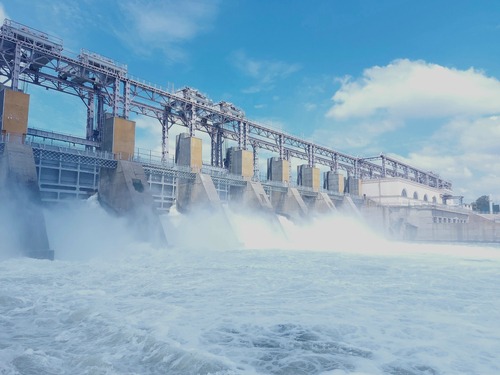Droughts could fuel 14 percent decline in U.S. hydropower generation this year

The nation’s hydropower plants could generate 14 percent less electricity in 2021 than they did in 2020, due to the ongoing, extreme drought conditions gripping the West, according to the latest projections from the U.S. Energy Information Administration (EIA).
In its Short-Term Energy Outlook, the administration addressed the beleaguered states of the Pacific Northwest and California, home to the majority of U.S. hydropower capacity and drought emergencies that have plagued the region throughout the summer. California alone accounts for 13 percent of the total U.S. hydropower capacity, and amid reductions in water supply and generation caused by the droughts, it has been on the lower side of its 10-year generation range.
For a more specific example, take the Columbia River Basin, which covers swaths of Washington, Oregon, Idaho and Montana. The fourth-largest river in the U.S. by volume, its hydropower plants generated 136 billion kilowatthours (kWh) of electricity in 2020, 54 percent of the U.S. total for hydropower. This year, reservoir storage levels in some states have tumbled and drought emergencies have been consistent and record breaking across Washington, Oregon and Idaho.
As of August, reservoir storage in both Oregon and Idaho were running well below their historical, average capacity. In Oregon’s case, the National Water and Climate Center declared the state at 17 percent of capacity, or less than half its average capacity of 47 percent. Idaho sat at 34 percent, also well below its average capacity of 51 percent.
Still, over the summer, hydropower generation in Washington and Oregon was within the 10-year range.
Nevertheless, the EIA forecast that hydropower generation within the Northwest electricity region would fall 12 percent to 120 billion kWh this year. California could drop by as much as 49 percent compared to last year, reducing its generation to 8.5 billion kWh.
